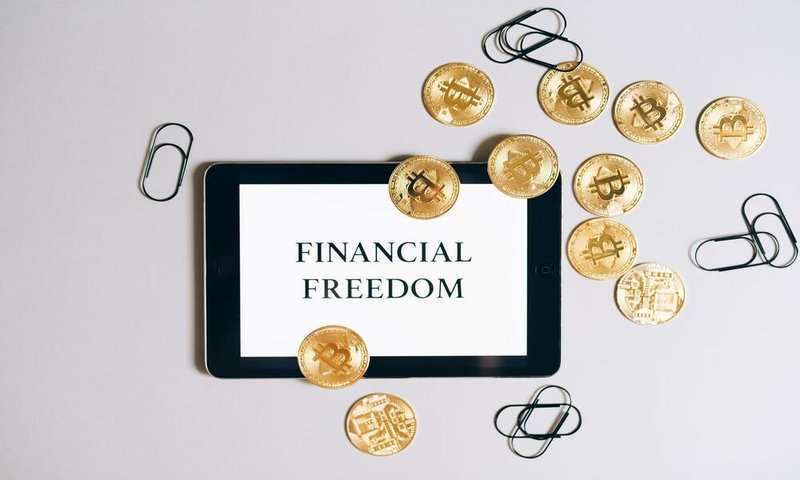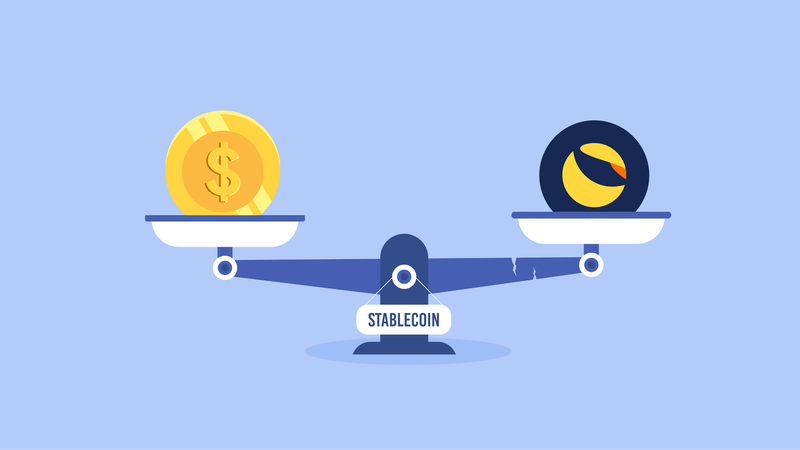Asset-Backed Stablecoin: A Beginner's Guide to Launch and Success
Investors in the cryptocurrency world have become billionaires overnight, only to lose a major amount of their income a few weeks later. While this is encouraging, it also highlights the volatility of popular cryptocurrencies such as Bitcoin, particularly when used to pay for goods and services. Stablecoins can be in handy in this circumstance. Stablecoins are expected to have a much steadier value than traditional cryptocurrencies. This is because they are tied to other assets such as the US dollar, Gold, Silver, Diamond, and other precious metals or commodities.
Understanding of Stablecoin:
For years, stablecoins have emerged as key competitors in the cryptocurrency industry, driven by customer need for flexible liquidity in fiat currency times. These currencies are characterized as a sort of digital money that may be tied to or backed by underlying real-world assets.
These assets might be fiat money such as USD or commodities like gold, silver, diamond, or even another cryptocurrency. Stablecoins, as the name implies, are intended to have a value that is (relatively) steady like cash, as opposed to the volatility that is frequent in cryptocurrency trade today.
For instance, a typical dollar-backed stablecoin may entail the token issuer retaining 1000 tokens at USD 1 each. Token holders can exchange these digital coins in the same way that any other cryptocurrency can.
The main distinction is that the possessor can convert digital coins to fiat money at any moment for a comparable amount of US dollars. Because the US dollar is very stable, customers do not have to worry about their money-losing value overnight. According to the coin market, there are approximately 120 billion dollars have been invested in stable coin cryptocurrencies.

Types of Stablecoins in the Crypto World:
Collateralized Stablecoins:
Collateralized Stablecoins are ones whose price variations are guaranteed by collateral. They are further categorized as follows:
Fiat-backed stablecoins:

Stablecoins backed by fiat money are fixed to the valuation of traditional currency. Tether (USDT) was the first fiat-backed stable coin issued on 6th October 2014 on the Bitcoin blockchain, introducing the notion of a cryptocurrency linked to the value of the US dollar and supported by reserves representing the whole market capitalization.
Asset-Backed Stablecoins:

Stablecoins backed by real commodity assets other than crypto or paper currencies are known as asset-backed stablecoins. The asset-backed tokens are linked to the value of real-time commodity assets like gold, silver, diamonds, oil, real estate, and so many more.
Crypto-backed stablecoins:

Crypto-backed stablecoins are backed by cryptocurrency, but they utilize protocols to ensure that their value does not fluctuate with the price of the underlying token. DAI token is a stablecoin backed by Ether and fixed to the US dollar value. It keeps its price stable using the Developer's Smart Contract, which destroys and generates tokens in response to ETH price swings.
Non-collateralized stablecoins:
Non-collateralized stable coins, also known as Seigniorage shares or algorithmic stable coins, incorporate one of the fundamental ideas of cryptocurrencies: decentralization. Since many crypto fans have claimed that stable coins should not be based on an asset but rather on algorithms, the notion of non-collateralized stable coins has entered the scene.
Non-collateralized stable coins rely on a formula drawn from demand-supply rather than a central institution for financial power.
What you need before launching a stable coin:
Determine the type of stable coin to be created:
Before you begin constructing your stablecoin, undertake market research and decide which sort of stablecoin you want to create. As previously said, there are two primary sorts of stablecoins such as collateralized and non-collateralized.
It's tough to draw comparisons between them. As a result, it is hard to debate whether one sort of stablecoin is preferable to another. If you want to offer long-term stability, use the algorithmic stablecoin.
However, if you want short-term stability with a safe underlying asset, you should go with collateralized stablecoins. To determine the sort of stablecoins you require, consider the following:
- What percentage of liquidity do your stablecoins require?
- What level of decentralization you are looking for?
- What number of audits you can afford to improve users’ confidence and decrease risk in your stablecoins?
- How straightforward or sophisticated do you want the overall blockchain architecture to be?
Once you've answered the questions above, you'll know what kind of stablecoin you want to create.
Finalize the Tech stack for Blockchain Development:
Once you've decided on the sort of stablecoin your company requires, you'll need to select a blockchain platform on which to develop it.
The Ethereum blockchain was originally the exclusive platform for the creation of stablecoins, however, this is no longer the only choice.
As a result, it is vital to plan ahead of time for the basis of your prospective Stablecoin.
Liquidity management:
A stablecoin's systemic instability might be caused by poor liquidity management. The stablecoin creator must watch the currency or commodity index rates every day to guarantee that liquidity is maintained.
As a result, stablecoin developers must ensure that index rates in the system are automatically checked. In addition, the issuer must maintain liquidity by allocating a portion of transaction fees to the liquidity reserve.
Regulatory Compliance Body:
It is essential to get a “Limited Purpose Trust” charter from the State Department of Financial Services to continue to regulate the company as a Trust organized under new banking law.
As this includes, providing consumer protection by maintaining significant capital reserve requirements, conducting periodic regulatory checks, and monitoring our operational operations. The State Department of Financial Services not only governs you as a firm but also regulates products and services.
Partnership with Custodian and Asset providers:
You must maintain contacts with significant institutions, including confirmation and affirmation services, in the gold, FX, and commodity markets.
As a result, it has secured relationships with leading gold suppliers, vaults/custodians, and miners to ensure that your commodity-backed stablecoins are exclusively supported by the highest-quality gold, silver, diamond, and other precious metals and stored in some of the world's most reputable vaults.
Bankruptcy Remote:
You need to get a “Limited Purpose Trust” charter from the State Department of Financial Services to continue to regulate the company as a Trust organization.
In the event of the company’s insolvency, customer assets are kept separately from the company’s assets. All gold bars represented by commodity-backed stablecoins are custodied by a state-chartered trust company for stablecoin holders and do not become a part of the company’s estate.
Intuitive user platform:
For many gold consumers, cryptocurrencies such as stablecoins remain uncharted territory. The benefits of holding a gold-backed cryptocurrency, on the other hand, may soon entice more investors and users to stablecoin platforms.
To ensure stable coin acceptance, the learning curve to engage with the coin must not be extreme. As a result, it is critical to provide the customer with an extremely user-friendly platform.
Whether it is a website or mobile application, the end-user should find it simple to use.
Conclusion
The goal of cryptocurrencies so far has been to build a virtual asset that is less volatile and more liquid. The stable coin is seen as the crypto world's cornerstone, capable of facilitating frictionless transactions not only between stakeholders trading with cryptocurrencies but also between individuals or companies that may need to move between crypto and traditional currency.
Want to build your Blockchain application?
If you’re ready to understand how your business can leverage blockchain to disrupt your industry, Decodermind is happy to help.
Decodermind provides a wide range of services, from dynamic mobile app development to personalized corporate solutions and cutting-edge web development. Catering to a diverse clientele across various niches and sizes, we have extended our services to clients in the USA, UK, and Europe.
Decodermind is ready to be your trusted partner on this technological journey, whether you are a startup looking for a disruptive app, an established corporation aiming for digital transformation, or a firm in need of bespoke solutions. Our diverse approach, founded on creativity and technical competence, is adapted to the specific needs of your digital ambitions.
We welcome your ideas, questions, and participation. Your ideas inspire our never-ending quest for innovation. Share your thoughts, inquire about our services, or find us on social media. The future of digital innovation in the United Kingdom is not just a story we tell; it is a narrative we co-create. Join us in shaping the next chapter in the technological growth of the United Kingdom. Explore, interact, and embark on a digital transformation journey with Decodermind.
Get in touch with us for more information on our blockchain development services.

 Hamid Salman
Hamid Salman